It’s a tribe battle for supremacy in Ethnos
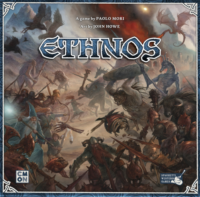
“In the faraway land of Ethnos, a new Age is dawning. The ashes of the old Age have left the Six Kingdoms empty and the twelve Tribes scattered to the winds. Now is the time for a clever leader to unite them into a powerful alliance, skillfully using the unique talents of each Tribe to control the Kingdoms.”
That’s how the stage is set for this fun set collection and area control game to play out.
In Ethnos, by CMON, players channel the help of giants, merfolk, halflings, minotaurs, and other fantasy tribes to help them gain control of the land and gain Glory. After 3 Ages of play, whoever has the most Glory wins!
When we first saw Ethnos, it made us think about Small World – another fun area control game with a variety of fantasy creatures. But once we looked further, we realized both games are vastly different in how they play out.
It’s time to take a closer look at Ethnos, it’ll be worth your while.
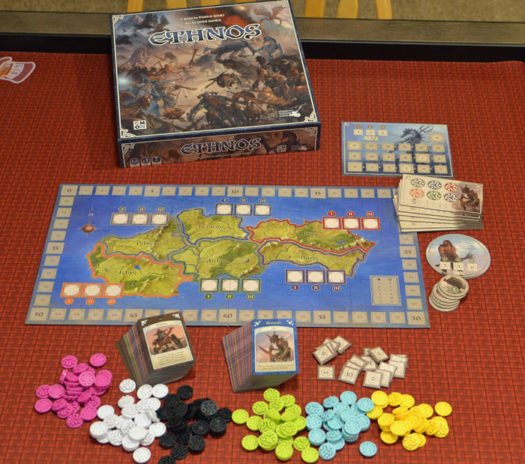
How to play Ethnos
Ethnos combines set collection, area control, variable powers, and randomized scoring to make each game unique.
The land of Ethnos contains 12 Tribes of fantasy creatures and covers 6 Kingdoms. In each game, players randomly choose only 6 of the Tribes to create an ally deck. Each Tribe is made up of 12 cards in 6 colors (2 of each color), which match the 6 Kingdoms of the Ethnos island board.
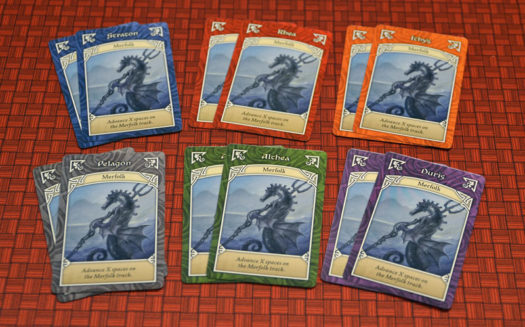
During set up, 3 Glory tokens are randomly drawn for placement in each Kingdom and placed in ascending value on the 3 squares by the Kingdom.
Each player starts the game with one ally card in hand. A number of ally cards equal to twice the number of players is then placed face up on the table. Then the 3 Dragon cards are shuffled into the bottom half of the Ally deck and players are ready to begin.
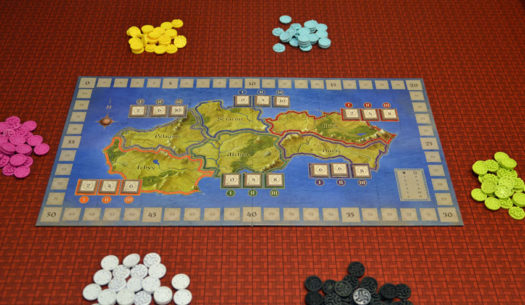
On a player’s turn, they can either Recruit and Ally or Play a Band from their hand.
To Recruit an Ally, the player simply takes a card from the top of the draw deck or one of the face up cards (without replacing it) and adds it to their hand.
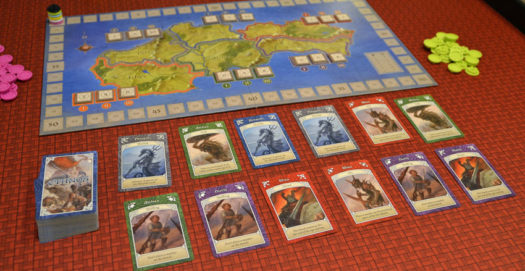
To Play a Band, the player chooses a set of card in their hand that match in either Tribe or Color. A Band can be from 1 to 10 cards that match. For example, a Band could be 3 Wizard cards or 3 Green cards (Green Wizard, Green Giant, and Green Halfling).
They play the set of cards down in front of them as a Band. The top card of the played set is the “leader”. If the Band is large enough, the player places one of their colored control tokens in the Kingdom matching the color of the Band leader card.
A player can place a control marker as long as the are fewer of their control markers in the area than the number of cards in the Band. For example, to place another marker in an area where a player already has 3 markers, they would need to play a Band of at least 4 cards.
When playing a Band, the player can also use the unique Tribe ability of the leader.
If the player has any cards left in hand after playing a Band, they must discard them face up next to the other face up Ally cards. These cards will now be available for any player to recruit on subsequent turns.
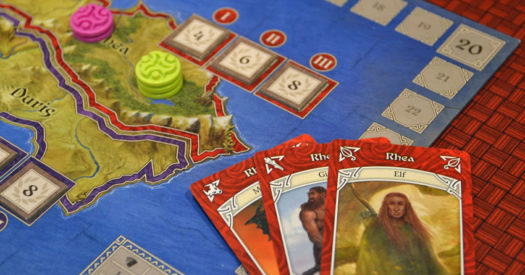
When the third Dragon card is drawn from the Ally deck, the Age immediately ends.
All players discard all the cards in their hands and Glory scoring begins.
After the first Age, whoever has the most control markers in a Kingdom scores the Glory shown on the leftmost Glory token. After the second Age, the player with majority control gains Glory from the second Glory token and the player in second place control gets Glory equal to the first token. The same goes for the end of the third Age, but the top 3 players in each Kingdom get Glory points corresponding to the descending Glory tokens.
In addition to the Kingdom scoring, players also get Glory based on the size of their played Bands during the Age. The bottom right corner of the board shows the amount of Glory players get based for their Bands. For example, a Band of 5 cards is worth 10 points.
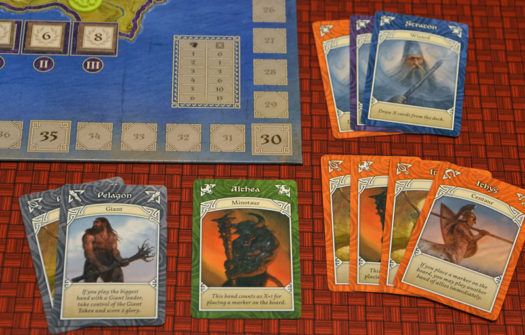
After scoring the third Age, the player with the most Glory wins!
Can the whole family enjoy Ethnos?
If your family currently consists of youngsters, Ethnos isn’t going to be a good fit. While the game play is very straightforward on a turn – either draw a card or play a Band – the strategic elements are what drive the game play. And those are better left until your kids are older.
If on the hand your family consists of teenagers, then Ethnos is a great board game to dive into!
There’s plenty of strategy to keep players engaged throughout the whole game.
Add to that mix the battle for majority over the territories and you’ve got a great game for up to 6 players of teens and adults.
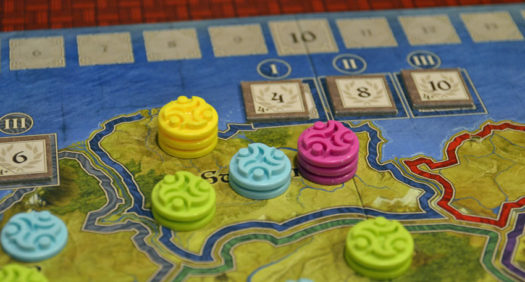
What we love about Ethnos
When Ethnos was published last year it got a lot of buzz of being a fantastic board game. Of course, I see plenty of buzz about all sorts of new games that often fade away. So I was a bit skeptical this would be just another artificial hype kind of buzz.
So to be truthful, when I sat down to play Ethnos for the first time, I was ready for it to fall flat.
Oh, am I so glad I was wrong!
There are plenty of reasons why Ethnos hits a home run.
First, is the vast variability in the game. Right from the start players will be hit with a unique game set up every time. The random placement of the Glory tiles across the different Kingdoms means the hotly contested Kingdoms will change each game as well as which Ages of the game will be most important for control of such Kingdoms.
The vast variability is also apparent in the random mix of which Tribes are in play each game. With only 6 of the possible 12 Tribes in play each game, players are faced with a unique mix of abilities to command with every play.
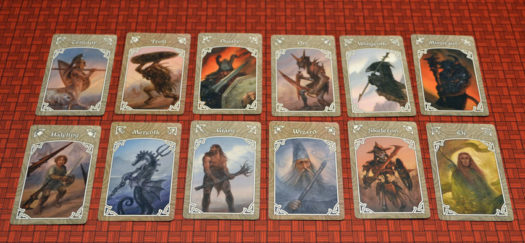
That brings us to the next thing we love about Ethnos – the variety of special abilities of the different Tribes.
With Tribe having a unique ability, the choice of which Tribe to lead a Band is most often a tough choice. Sure the Elf ability to keep cards in hand rather than discard them is a great ability. But if you could also lead that band with a Centaur, you could immediately play another Band from your hand.
Yet that’s also not the only choice you have to consider when playing Bands. You also have to plan which Kingdoms you’re trying to control so you can play the right color card as the leader as well.
Oh the choices!
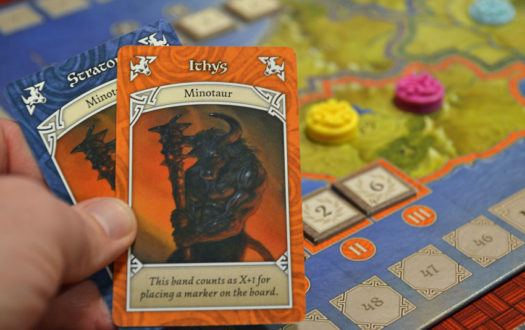
In a set-collection game, players love hoarding cards to store up large sets. But with Ethnos, that’s often not a good strategy. Not only because you have a hand limit of 10 cards, but rather because any cards you don’t play in your band you’ll have to discard face up to the table where other players will then be able to scoop them up.
So the less you have to discard the better.
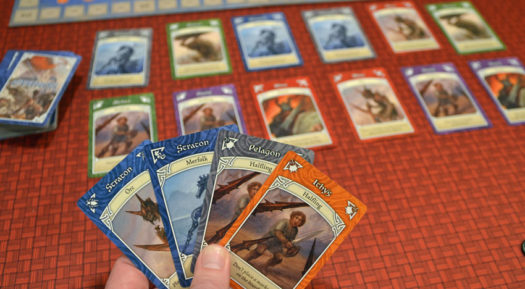
We also like the additional scoring boards for some of the Tribes in the game. For example, when playing a Merfolk as a leader of a Band, in addition to placing a control marker (if you can), you get to move a marker up the Merfolk board track as many spaces as there are cards in the Band. And as you progress along that board, you’ll hit points where you’ll get to place additional control markers for free on any Kingdom.
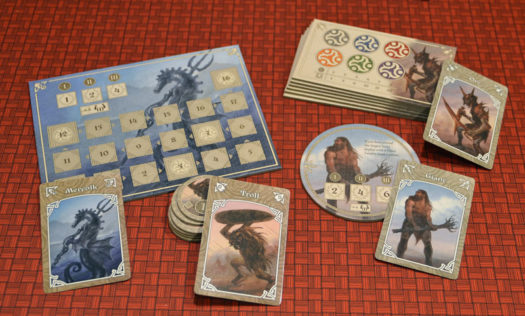
Ethnos is also a great game because there’s plenty of player interaction. The map is small with only 6 Kingdoms and the scoring is tight. So players must choose carefully which cards to play so they can control the most value areas. What one person does on their turn will always impact others.
The last thing we love about Ethnos is that there’s also a good balance of luck in the game.
In our family, pure strategy games aren’t loved by all. So when a game has a good mix of luck and strategy, it has a better chance of being a hit with us.
And Ethnos strikes that great balance.
Not only is there the luck of the card draw from the Tribes stack. But there’s also a big luck element on when each Age ends.
When the first Dragon card is drawn, no big deal.
When the second Dragon card is drawn, we start to feel the pressure of trying to complete as many final Bands as we can before the end. If we can swing control of a Kingdom in our favor before the fateful last Dragon card is drawn, all will be well…
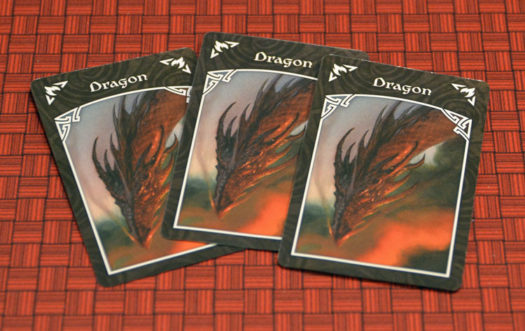
But the Age typically ends with shouts of “dang” or “if only”.
And while that may sound bad, it’s actually one of the big reasons we love playing. It means the end of each Age leaves something up for grabs that will have an unexpected end.
That also plays over to the end of the game at the end of the 3rd Age when final scoring occurs.
And you know what that means… calls for “let’s play again”.
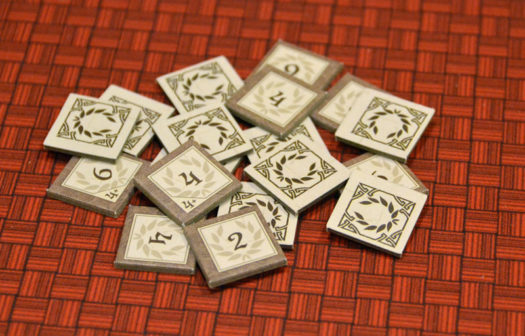
How does Ethnos score on our “Let’s Play Again” game meter?
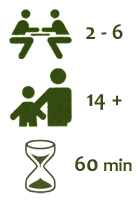 So did we just give away our answer to this question?
So did we just give away our answer to this question?
Ethnos definitely scores high on our “let’s play again” game meter because of all the reasons we’ve just listed – variability, special abilities, choices, and a good balance of luck and strategy.
It also scores high because it’s so simple to teach to new players.
If you like area control, set collection, or variable set up and scoring we’d highly recommend you find a chance to play Ethnos.
We’d like to thank Miniature Market for a review copy of Ethnos.

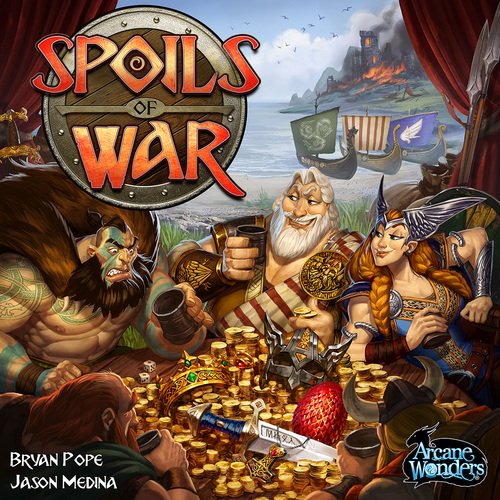
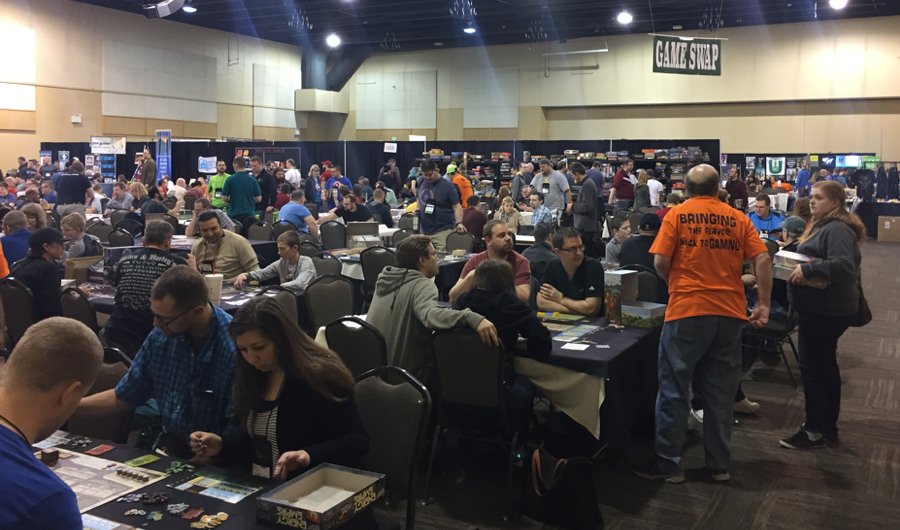
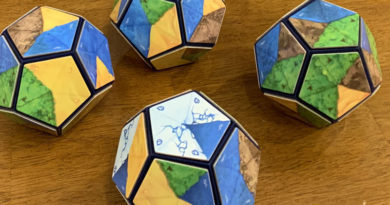

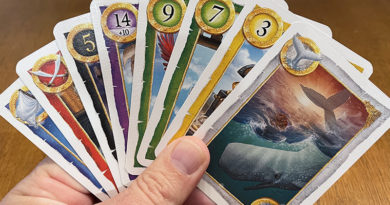
Do you guys know, that the boardmap is an actual country? SLOVAKIA!
Edo – We weren’t aware of that. Thanks for the info!